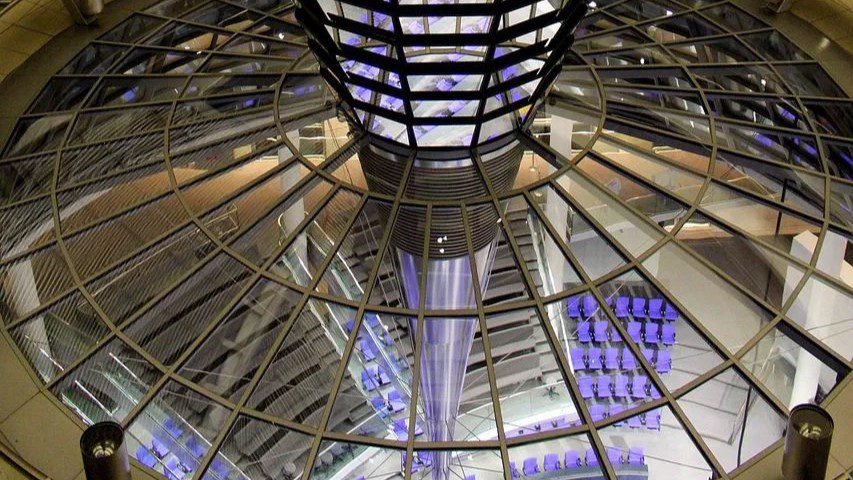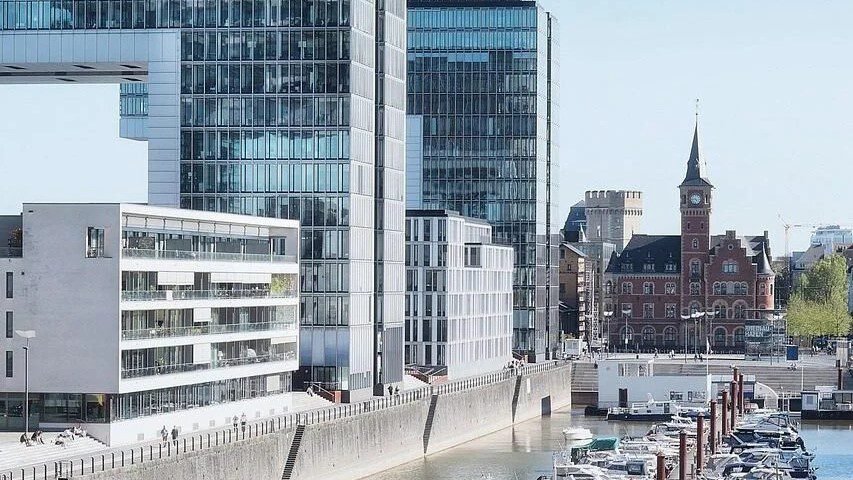The European Central Bank lowered its key deposit rate by a quarter point to 2.0% on Thursday, the eighth reduction in just over a year, but signalled it may now pause its most aggressive easing cycle since the global financial crisis after euro zone inflation fell back to its target.
The decision, which takes effect on 11 June, also lowers the rate on the ECB’s main refinancing operations to 2.15% and the marginal lending facility to 2.40%. All but one member of the 26-strong Governing Council backed the move, with Austria’s Robert Holzmann voting to keep rates unchanged.
President Christine Lagarde said the current level of borrowing costs left the ECB “in a good position” to navigate an uncertain global environment, comments that investors interpreted as a hint that policy will remain steady at the July 24 meeting unless new data forces a shift.
“With today’s cut, at the current level of interest rates, we believe we are in a good position,” Lagarde told a press conference. “We are not bound to a particular path on rates and will continue to decide meeting by meeting, based on the data available.”
From urgency to patience
The ECB has cut borrowing costs by a total of two percentage points since June last year to shore up a euro area economy hit by weak demand, high energy prices and the fallout from U.S. trade policy under President Donald Trump. The pace and scale of the reductions have outstripped those of most other major central banks, pushing European rates well below those in the United States and Britain.
Inflation in the 20-nation currency bloc slowed to 1.9% in May, dipping below the ECB’s 2% target for the first time since September last year, while underlying price pressures also eased. The bank now sees inflation averaging 2.0% this year, 1.6% in 2026 and returning to 2.0% in 2027.
Several policymakers argued in Thursday’s meeting that with inflation back at target, much of the “legwork” in the easing cycle had already been done and further stimulus should be held in reserve. Four sources familiar with the discussions said there was broad agreement to pause in July, with a final 25 basis point cut possible in September if growth falters.
Economists share that view. “We think the ECB is done cutting rates now, but this is contingent on no major negative surprises and the economic outlook improving in line with their forecasts,” Nordea said in a note to clients. HSBC echoed that assessment, calling Thursday’s move “likely the last for some time”.
Markets price in pause
Money markets now expect no change in July and see a roughly 60% chance of one further cut before year-end, most likely in December. The euro firmed after the decision, reflecting expectations that the ECB is close to the end of its easing cycle, while euro zone government bond yields rose slightly.
The prospect of a pause contrasts with expectations earlier this year for a string of cuts through 2025 as the economy flirted with recession. Stronger-than-expected labour market data, resilient household consumption and a firmer currency have tempered those bets.
Trade war clouds outlook
Lagarde warned that uncertainty from U.S. trade tariffs remained a key risk to the outlook. The ECB’s latest projections assume a moderate hit to exports and investment, but the bank also published alternative scenarios showing how growth and inflation could diverge if the trade conflict escalates.
The tariffs, already weighing on business confidence, have prompted some firms to delay investment or reroute supply chains. “While trade policy uncertainty is expected to weigh on business investment and exports, especially in the short term, increased public investment in defence and infrastructure will increasingly support growth over the medium term,” the ECB said in its statement.
Falling energy prices and the stronger euro could further dampen inflation in the coming months, though this could be offset by higher import costs if the trade dispute deepens.
Near-term weakness, longer-term pressures
The ECB expects inflation to dip below target next year, raising the spectre of the pre-pandemic decade when price growth persistently undershot 2%. However, several structural factors are likely to put upward pressure on prices in the longer run.
Higher defence spending – particularly in Germany – and the costs of the green transition will add to fiscal stimulus and may push wages higher. An ageing population and shrinking workforce are also expected to keep labour markets tight.
“This is a complex picture,” Lagarde said. “In the near term, inflation is projected to be below target, but over the medium term, structural changes could bring it back up or even above.”
Why the ECB cut now
Thursday’s cut was aimed at reinforcing the bloc’s resilience to a volatile global environment. The ECB said easier financing conditions, combined with rising real incomes, a strong labour market and robust private sector balance sheets, should help consumers and firms withstand external shocks.
The bank also pointed to signs that the euro zone is attracting more foreign investment, bolstering confidence in the single currency and partly explaining the euro’s appreciation against major peers in recent months.
Lagarde reiterated her call for governments to accelerate structural and fiscal reforms to make the euro zone “more productive, more competitive, and more resilient” to shocks. She stressed that macroprudential policy – measures to contain financial risks – should remain the first line of defence against potential vulnerabilities.
Leadership speculation dismissed
Addressing questions about her future, Lagarde dismissed rumours she might leave before her eight-year term ends in October 2027. “I have always been determined to complete my mandate,” she said. “You are not about to see the back of me.”
Her comments followed speculation linking her to international roles, including at the World Economic Forum, after the departure of its long-time head Klaus Schwab.
Global policy divergence
The ECB’s deposit rate is now less than half that of the Bank of England’s 4.25% and far below the U.S. Federal Reserve’s 4.25–4.50% range. Fed Chair Jerome Powell has resisted calls from Trump to cut aggressively, citing still-firm inflation and strong U.S. job growth.
Trump, reacting to Thursday’s move, renewed his criticism of Powell on social media, calling for immediate rate cuts in the United States.
The Bank of England, meanwhile, has taken a more cautious approach amid domestic inflation pressures and political uncertainty.
What comes next
Most analysts expect the ECB to keep rates unchanged in July, with September or December as the earliest windows for another reduction. A faster pace of cuts would likely require a sharper slowdown in growth or a deeper inflation undershoot than currently projected.
“The trade war is inherently unpredictable,” said Mark Wall, chief European economist at Deutsche Bank. “The inflation undershoot could deepen and persist, in which case the ECB may have to act again sooner.”
For now, policymakers appear content to pause and assess the impact of the two percentage points of easing already delivered since mid-2024. Monetary policy works with a lag of up to 18 months, meaning much of the stimulus has yet to feed through to the economy.


